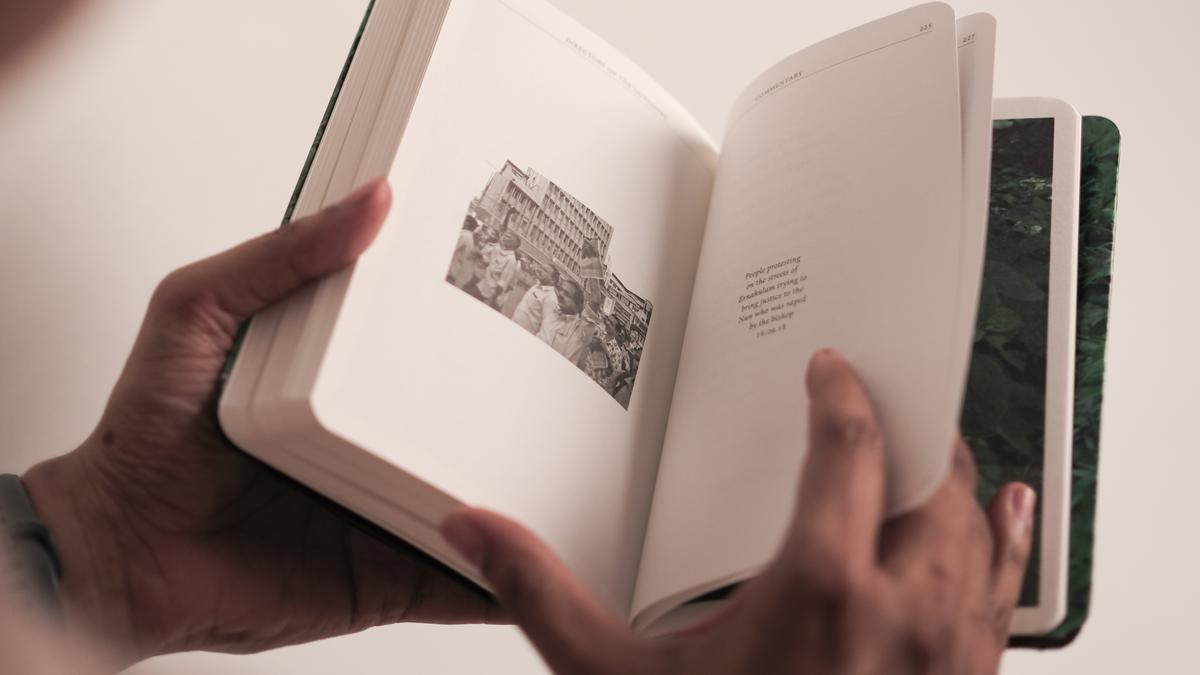
The ‘outsiders’ in death too
The Hindu
Indu Antony’s book chronicles the phenomenon of denying people a traditional burial ground and burying them without any rituals.
Indu Antony first heard about the concept of a Themmadi Kuzhi in 2017, when her father’s sister died by suicide. “There was a lot of talk about how cases like this would often go into a Themmadi Kuzhi (Malayalam for scoundrel’s pit),” says the Bengaluru-based artist, who released her limited-edition photobook, Directory of the Outsiders, last month. “That was when I first heard this word, and I started understanding that there was something like this,” says Antony.
She spent the next seven years working on this book that chronicles this phenomenon of denying people a traditional burial ground and burying them, without any rituals, in a different pit called Themmadi Kuzhi if they violated the church’s edicts in any way. “A lot of the cases were suicides, people who married outside the church or spoke against it,” says Antony, pointing out that as recently as 2018, the former nun Lucy Kalappura was threatened with the Themmadi Kuzhi when she spoke against the rape-accused priest, Bishop Franco Mulakkal.
After all, this fear of being excluded shapes people’s choices and is essentially about the church exercising control over society. “The last thing they can do to you is control your death,” she says. ”Living with the idea of shame, of having committed something wrong, the weight of sin—all of these things are addressed in the book,” says Antony, adding that even actress Priyanka Chopra’s grandmother was denied a burial because she had married a Hindu.
Working with two researchers on the ground, Indu and her team conducted interviews with nearly 100 people, trying to understand this phenomenon better. “It was a lot of groundwork, and some people didn’t respond,” she remembers, adding that they also looked at archives of various newspapers to further their research. “I chose the book form (to showcase these findings) to reach as many people as possible,” says Antony, who also displayed these findings at an exhibition earlier this year.
It was incredibly challenging because there was very little documentation of the practice. “We don’t know the beginnings of it,” says Antony. And though there have been records of people finding skeletons in the ground while constructing their homes near a church, “we don’t have strong evidence about who were the people buried in the Themmadi Kuzhi,” she says.
This lack of record around this practice shows up in the book’s aesthetic since “I wanted people to sit in with the idea that we don’t know a lot of things,” says Antony. Under a deep-green cover, printed with a photograph of one such Themmadi Kuzhi and brown binding, which mimics an old Bible, are page after page containing the outlines of passport-sized pictures of people with indistinct features. “One of the design decisions that we took early on, which was very crucial to the book, was—as we were discovering more and more cases of people—we decided to keep (only) the silhouettes of the people,” she says. When you lift the pages against the light, these disappear. “This was done intentionally to talk about the multiple cases that never came into light.”
Directory of the Outsiders, priced at ₹ 2500, is available for sale at www.mazhibooks.com













